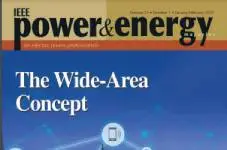On the Integration of Hydrogen Into Integrated Energy Systems: Modeling, Optimal Operation, and Reliability Assessment
Tao Wu, Jianhui Wang, and Meng Yue
-
Members: FreePES
IEEE Members: Free
Non-members: FreePages/Slides: 14
05 Sep 2022
The proliferation of renewable energy (RE) brings tremendous challenges to integrated energy systems (IESs). Converting RE into hydrogen, one of the cleanest energy carriers, provides an appealing alternative for decarbonized IESs. Among the various hydrogen applications, blending hydrogen into natural gas systems is already applicable. However, the disparate hydrogen physical properties trigger concerns about hydrogen integration. This paper investigates the integration of hydrogen into the IESs, focusing on blending hydrogen into natural gas systems. The literature on hydrogen modeling, control, operation, planning, and markets are first reviewed. Based on the convex combination methods, a power-to-hydrogen-heat-methane (P2HHM) model with unit commitment is proposed. The steady-state and dynamic gas flow models with the explicit consideration of hydrogen effects are then proposed. Two applications are given based on the proposed hydrogen modeling. A Wasserstein metric-based distributionally robust optimal operation model is proposed first based on the developed P2HHM and gas flow models. Then a sequential Monte Carlo simulation-based reliability assessment model is formulated to analyze the effects of hydrogen physical properties and hydrogen fractions on the optimal operation and reliability of the IESs. Numerical simulations are conducted to analyze the integration of hydrogen and verify the effectiveness of the proposed model.


